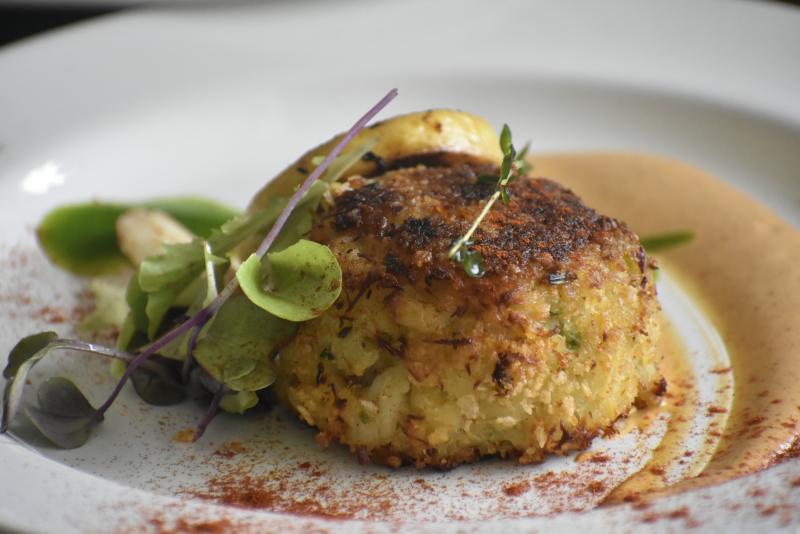
For decades, Suffolk County resident John T. Tanacredi has been a crusader for the survival of horseshoe crabs. He is a world expert on the creatures.
He was speaking last week before Long Island Metro Business Action about the plight of horseshoe crabs, concerned about their potential extinction after 455 million years. They predate dinosaurs, he noted, by more than 200 million years.
And they could be “on the cusp of going over the cliff of evolutionary extinction,” Mr. Tanacredi told the business group in a Zoom presentation Friday.
Beyond being an ancient component of the natural environment, horseshoe crabs are “critical to humanity, notably for the health of people,” he emphasized. Indeed, the title of his talk was “Humanity & the Horseshoe Crab.” They have been indispensable in the testing of vaccinations for COVID-19. “All these inoculations need to be batch sampled,” he said.
It’s the “true blue blood” of the horseshoe crab that’s key. (Its blue color is derived from its copper base rather than the iron that is at the foundation of human blood, he noted.)
The blue blood of the horseshoe crab is universally utilized for the detection of bacterial endotoxins in medical applications.
The crabs are “harvested” for medical use, bled, the blood collected, and then they are “returned to the environment,” with most of them surviving, he said.
But the horseshoe crab has been facing destruction of its habitat. “Their main habitat … is the fragile edge we call the barrier beaches,” he said. With construction and other human activities on barrier beaches, this shoreline habitat, to which they return somehow to breed in the exact location where they had been born, is being increasingly being lost.
Mr. Tanacredi remembered as a boy spending summers on beaches in Babylon. “There were tons of eel grass and tons of horseshoe crabs then.” Now? No horseshoe crabs, he said. “Nothing!”
And then there is the use of horseshoe crabs for bait, for catching conch and eel, even though there are “substitute baits,” he said. In the United States, 600,000 horseshoe crabs are harvested every year “and bled” for medical use, but there is an equal number “harvested for bait,” he said. New York State allows 150,000 horseshoe crabs to be taken annually for bait.
And horseshoe crabs are not all over the U.S., but limited to the East Coast, from Maine to Florida. Indeed, there are “only four species of horseshoe crabs on Earth.” The four species are on the U.S. East Coast; in the southern portion of Japan; a portion of Korea; and the southern portion of Taiwan. Adding further to the threat of horseshoe crab survival is they’ve become a food delicacy in Asia.
Mr. Tanacredi proposed last week that “we declare every beach that has horseshoe crabs off-limits, like we do for piping plovers.” And he said we should “bar bait collection” of them.
A Melville resident, Mr. Tanacredi is director of the Center for Environmental Research and Coastal Oceans Monitoring (CERCOM) of Molloy College of Rockville Centre. CERCOM is located in West Sayville. He is a full professor of Earth and Environmental Studies at Molloy. Before that, for 13 years, he was a professor and chairman of the Earth Marine Sciences Department at Dowling College in Oakdale, which closed down in 2016 (itself undergoing extinction).
Mr. Tanacredi holds a doctorate in environmental health engineering from NYU-Polytechnic Institute and has had 50 peer-reviewed scientific papers published, and has authored five books. He is an editor of the book Biology and Conservation of Horseshoe Crabs.
Mr. Tanacredi’s background also includes 24 years as a coastal research ecologist for the National Park Service. He was an environmental impact analyst for the U.S. Coast Guard. For 12 years he was deputy director of the Aquatic Research and Environmental Assessment Center at Brooklyn College. And he has been chairman of the New York Marine Sciences Consortium and also the Suffolk County Wetlands Management Work Group.
Horseshoe crabs, despite their name, are not crabs but more closely related to spiders and scorpions. They “survived five mass extinction events” that have occurred on Earth through their hundreds of millions of years of existence, said Mr. Tanacredi. But what now of their future?
The Link LonkMay 23, 2021 at 10:07PM
https://ift.tt/2ShT85W
Suffolk Closeup: Consider the horseshoe crab ... before it's too late - Shelter Island Reporter - Shelter Island Reporter
https://ift.tt/2MkGRbk
Crab

No comments:
Post a Comment